A pioneering palaeontologist and avid fossil collector, Mary Anning’s discoveries have contributed significantly to modern-day science. But until recently, she was relatively unknown.
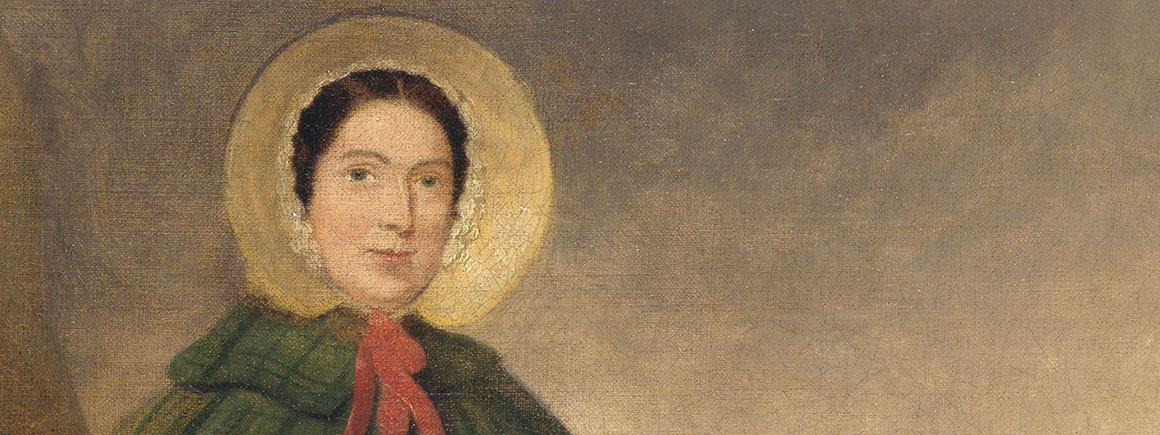
Detail of a portrait of Mary Anning by an unknown artist, before 1842.
Mary Anning was born in 1799 in Lyme Regis, which is now part of what’s known as the Jurassic Coast. Discoveries of fossils in this area are still being made to this day.
While Mary was growing up, George III was king, the war between the British and Napoleon’s French army was raging on and Jane Austen had written Sense and Sensibility.
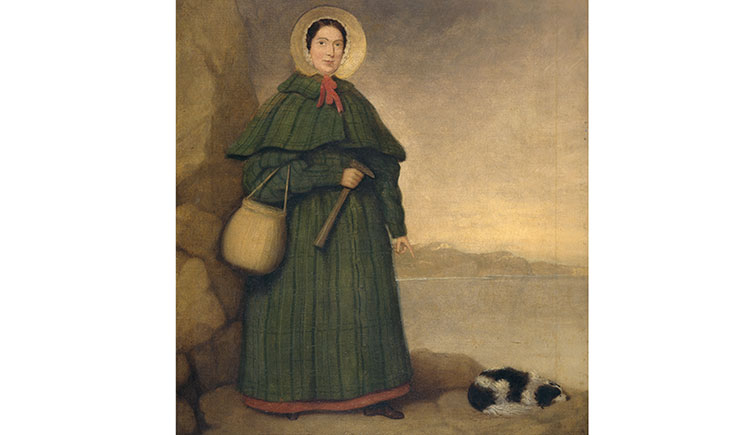
Mary Anning’s contributions to science have, until recently, remained relatively unknown.
Rough start in life
The Anning family were religious dissenters – Protestants who separated from the Church of England. They were very poor. Out of nine children, only Mary and her older brother, Joseph, survived to adulthood.
Mary’s father, Richard, was a cabinetmaker and amateur fossil collector. By the time she was five or six, Mary was his fossil-collecting sidekick – an otherwise unfathomable activity for Georgian girls.
Richard taught his daughter how to look for and clean the fossils they found on the beach, and he often displayed and sold them from his shop.
Like many women and girls in Lyme Regis at the time, Mary had little formal education, but she was able to read and taught herself geology and anatomy.
Richard died suddenly in 1810 from tuberculosis and previous injuries. Joseph took up a post as apprentice upholsterer and their mother, Molly, encouraged Mary to help pay off the family’s debts by selling her finds.
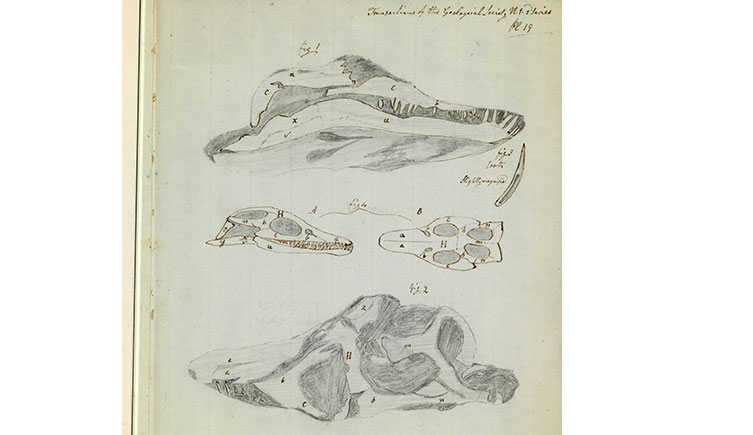
One of Mary’s detailed sketches.
Source of curiosities
Lyme Regis is especially rich in ammonites – which were called ‘Ammon’s horn’ – and belemnites, meaning ‘devil’s fingers’.
During the Napoleonic Wars, people were encouraged to holiday near home rather than abroad, so tourists flocked to seaside towns such as Lyme Regis.
Around this time fossil hunting was also gaining traction. This pastime was perfect for fashionable Georgians seeking to add to their cabinets of curiosities.
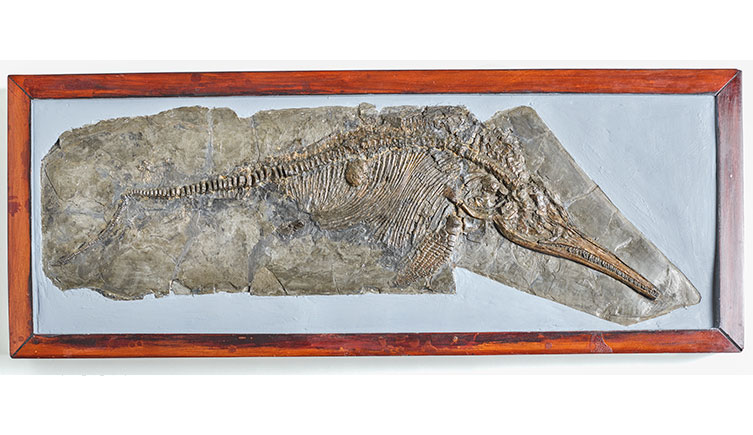
A specimen of Ichthyosaurus anningae that was discovered by Mary Anning.
First ichthyosaur
In the autumn of 1811, when Mary was 12, Joseph found a strange-looking fossilised skull. About a year later, in November 1812, Mary searched for and painstakingly dug the outline of its five-metre-long skeleton. By the time she was done, several months later, everyone in town thought that she’d discovered what must have been a monster.
Scientists thought it was a crocodile. At the time most people assumed that unearthed, unrecognisable creatures had simply migrated to far-off lands.
By this time, Georges Cuvier, known as the father of palaeontology, had only recently introduced the theory of extinction. Charles Darwin’s On the Origin of Species would not be published for another 48 years.
The mysterious specimen was studied and debated for years. By 1820, it was recognised as being an extinct marine reptile and named Ichthyosaurus, or ‘fish lizard’ – though we now know it was neither fish nor lizard, but a marine reptile. It lived 201-194 million years ago.
Although this wasn’t the first ichthyosaur to be found, it was the first to be scientifically studied and described in literature.
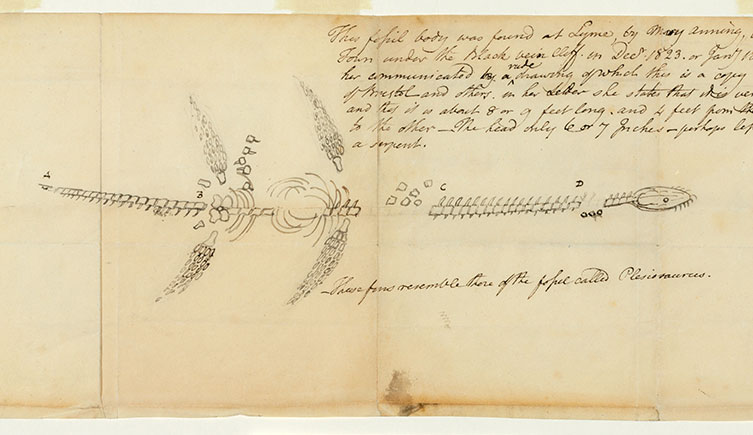
Mary Anning’s sketch of her first plesiosaur.
Controversial find
In December 1823, Mary was the first to discover the complete skeleton of a Plesiosaurus which means ‘near to reptile’. So strange was the specimen and so quickly had the news spread that soon there were rumours that the fossil was a fake.
Georges Cuvier reviewed sketches and disputed the find. He thought it was either a fake, an error or a composite – two individuals put together. A special meeting was scheduled at the Geological Society of London, though Mary was not invited. Cuvier was sent further illustrations by researchers and assured it was indeed real.
Despite her growing reputation for finding and identifying fossils, the scientific community was hesitant to recognise Mary’s work.
Male scientists – who frequently bought the fossils Mary would uncover, clean, prepare and identify – often didn’t credit her discoveries in their scientific papers, even when writing about her groundbreaking ichthyosaur find.
Even the Geological Society of London refused to admit her – they didn’t allow women to become Fellows until 1908.
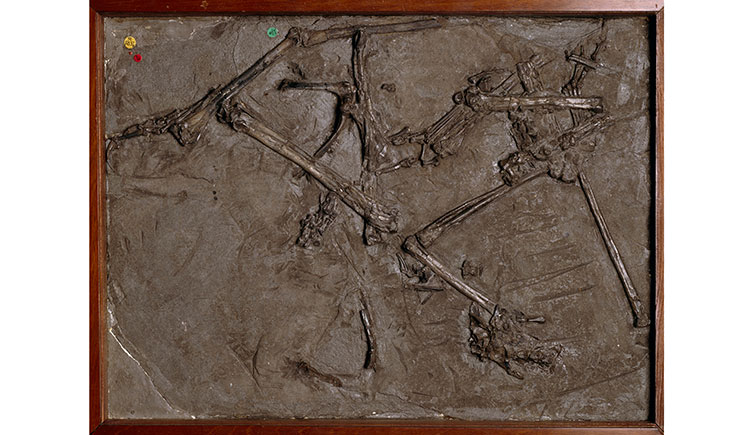
Mary’s first pterosaur. This animal is now known as Dimorphodon.
Winged creature
In December 1828, Mary uncovered a strange jumble of bones, this time with a long tail and wings. Once again, news of her discovery travelled fast. Scientists from London to Paris theorised on this “unknown species of that most rare and curious of all reptiles”.
What she’d found were the first remains attributed to a Dimorphodon. It was the first pterosaur ever discovered outside Germany.
Unlike ichthyosaurs and plesiosaurs, pterosaurs had wings and were believed to be the largest-ever flying animals.
When did the flying reptile Dimorphodon live?
Sparking public interest
Mary continued to unearth fossil after fossil. She also pioneered the study of coprolites, which is fossilised poo.
She sold her many finds, which increasingly fuelled public interest in geology and palaeontology. People flocked to fossil displays around the country and major museums struggled to keep up with demand.
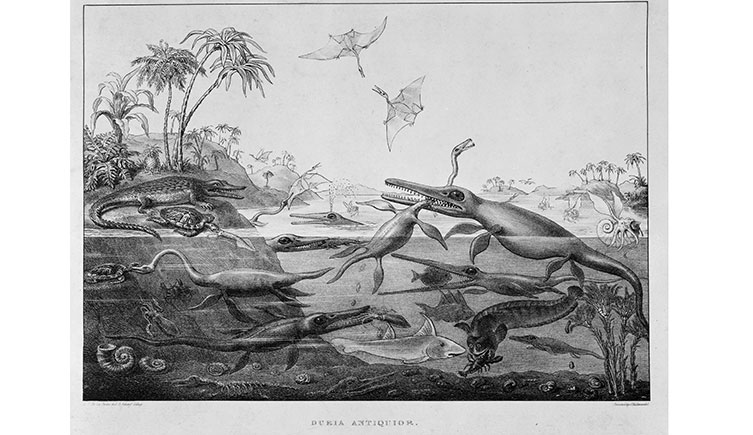
Duria Antiquior – A More Ancient Dorset.
Her discoveries inspired famous geologist and her childhood friend Henry De la Beche, to paint ‘Duria Antiquior – A More Ancient Dorset’ in 1830. He sold prints to raise money for Mary, who was still struggling to make ends meet.
Duria Antiquior – complete with ichthyosaur, plesiosaur and pterosaur – is the very first pictorial representation of prehistoric life based on fossil evidence.
This art form is now known as palaeoart and it is still popular today. It helps people to understand a little about life on Earth millions of years ago.
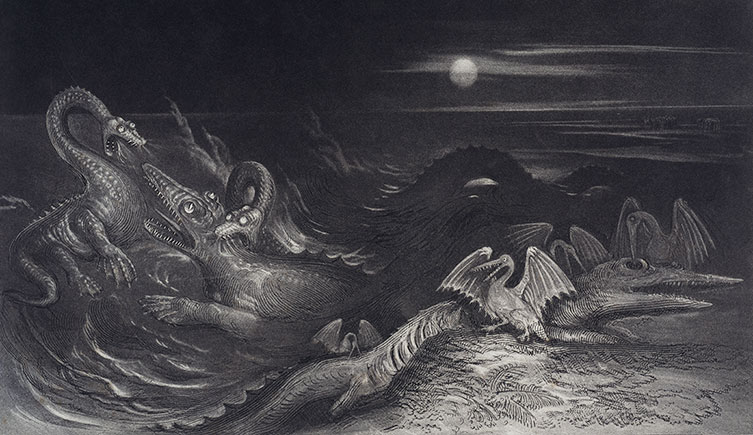
Mary’s Plesiosaurus also inspired geologist Thomas Hawkins’s Book of the Great Sea Dragons, published in 1840.
Mary Anning’s legacy
Mary died from breast cancer in 1847. She was only 47 years old and still in financial strain despite a lifetime of extraordinary scientific discoveries.
Although her pioneering work was generally overlooked at the time, her contributions to paleoethology are widely celebrated today.
In 2022, a statue was unveiled of Mary and her dog in Lyme Regis after a campaign by 11-year-old, Evie Swire who was determined to see her hero recognised.
Other recognitions to honour Mary and her discoveries include special edition Royal Mail stamps and a commemorative 50p coin. There’s also been films and television series based on her life.
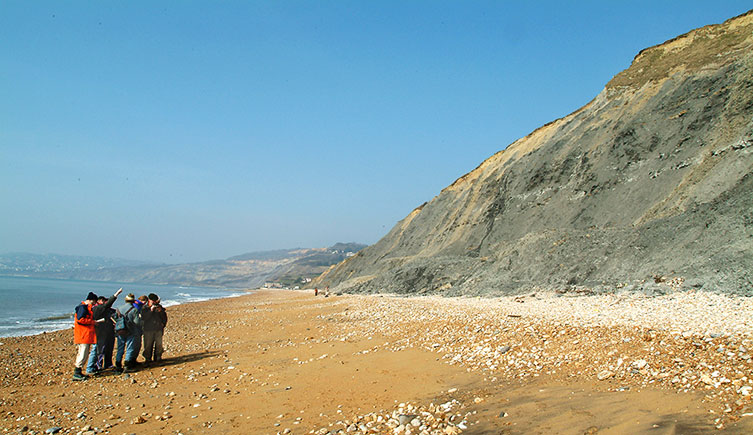
Some of our scientists in Lyme Regis, 2003.
In 2018, The Anning Rooms for members and Patrons were opened at the Natural History Museum in a once disused area near Hinze Hall. Facilities include a restaurant, study and over 150 objects and specimens.
Our visitors can see several of Mary’s spectacular finds on display, including her ichthyosaur, plesiosaur and pterosaur. Much like they did two centuries ago, her fossils continue to captivate people from around the world.
Mary’s legacy lives on along the rugged Jurassic Coast – now a UNESCO World Heritage Site – where scientists, amateurs and adventurous children alike gather year-round to hunt for the next big find.

See Mary’s fossils
Visit our Fossil Marine Reptiles gallery to see some of Mary’s finds on display.
Tyranno-interruptus!
Did you know we have on-demand courses available now? Live your dream and become a palaeontology pro with our expert scientist.




Don't miss a thing
Receive email updates about our news, science, exhibitions, events, products, services and fundraising activities. We may occasionally include third-party content from our corporate partners and other museums. We will not share your personal details with these third parties. You must be over the age of 13. Privacy notice.
Follow us on social media